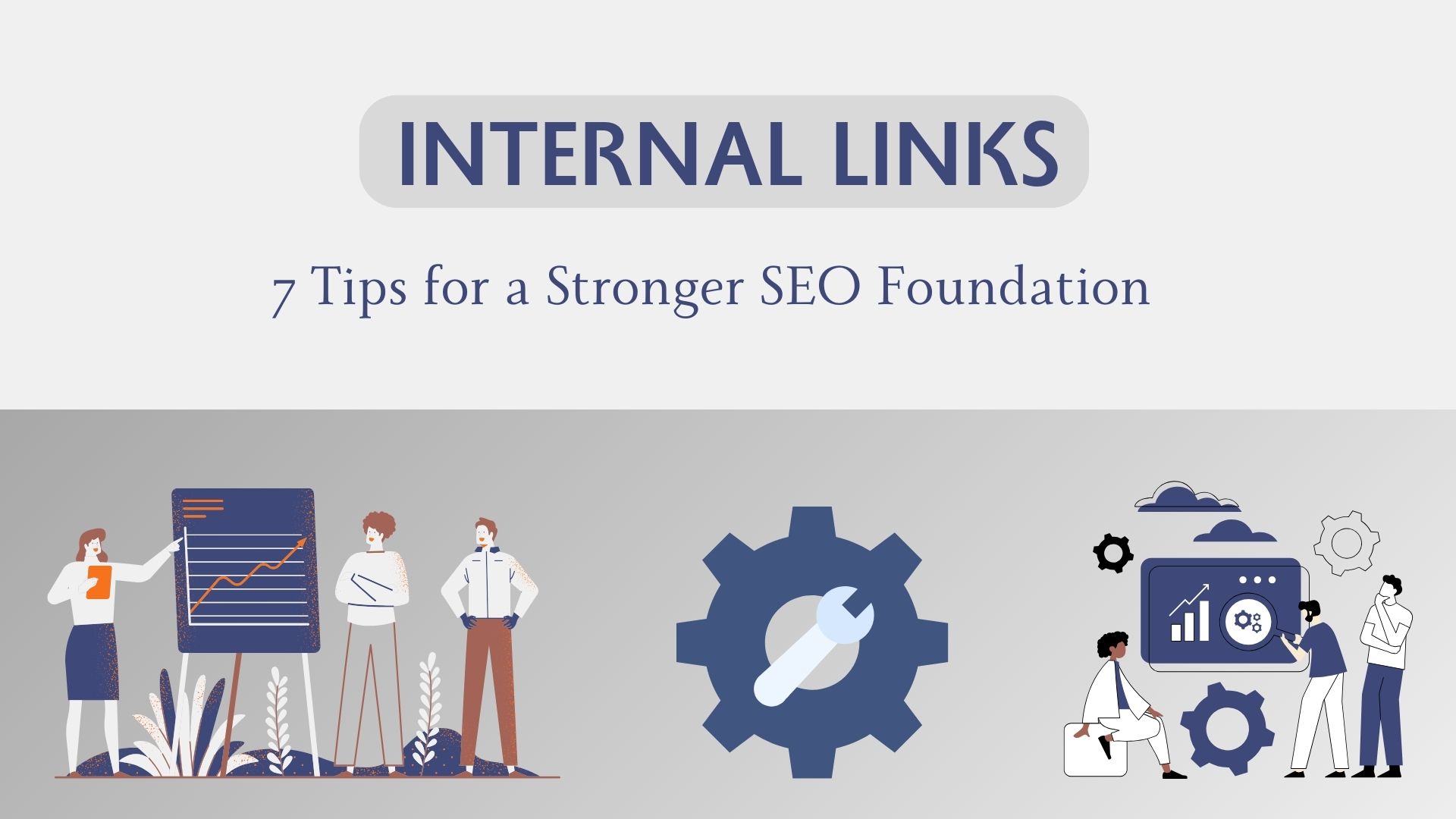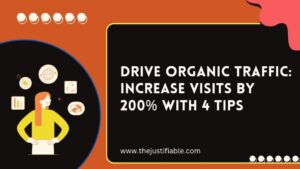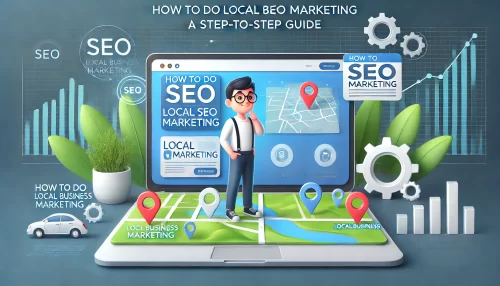Table of Contents
How can internal links transform your website’s SEO strategy? What makes internal links a cornerstone for a stronger SEO foundation? If you’re looking to boost your site’s visibility and enhance user engagement, understanding the strategic implementation of internal links is crucial.
From my perspective, internal links are not just navigational elements; they are powerful tools that, when used wisely, can significantly impact your site’s SEO performance.
Internal linking does more than just guide visitors through your website. It helps distribute page authority and ranking power across your site, making it easier for search engines to crawl and index your content. Most importantly, a well-structured internal linking strategy can enhance the user experience, keeping visitors engaged and reducing bounce rates.
In my experience, sites that master the art of internal linking often see improved search rankings and increased organic traffic. Let’s dive into how you can start leveraging internal links to build a stronger SEO foundation.
1. Unleash the Potential of Anchor Texts for Internal Links
Did you know that anchor texts, the clickable words used in hyperlinks, can significantly influence the SEO performance of your website? When used correctly, internal links with optimized anchor texts can guide both users and search engines through your content, enhancing site navigation and improving page authority.
Incorporating internal links with carefully selected anchor texts is essential for creating a coherent structure within your website. These links help search engines understand the context and relationship between different pages, boosting your site’s SEO. From my perspective, choosing the right words for your anchor texts is more than just an SEO technique; it’s an art that balances relevance and keyword integration.
Most importantly, the diversity of anchor texts plays a crucial role in avoiding over-optimization, a common pitfall that can lead to penalties from search engines.
I recommend using a mix of exact-match, partial-match, and generic anchor texts to create a natural link profile. This approach not only supports SEO efforts but also enhances the user experience by providing clear and descriptive navigation cues.
However, it’s crucial to avoid excessive internal linking with overly optimized anchor texts, as this can appear manipulative to search engines. In my experience, the best practice is to link naturally within the context of your content, ensuring that each link adds value to the reader’s journey.
Remember, the ultimate goal of internal links is to improve site usability and content discoverability, making each page more accessible to both users and search engines.
SEO Services Recommendations
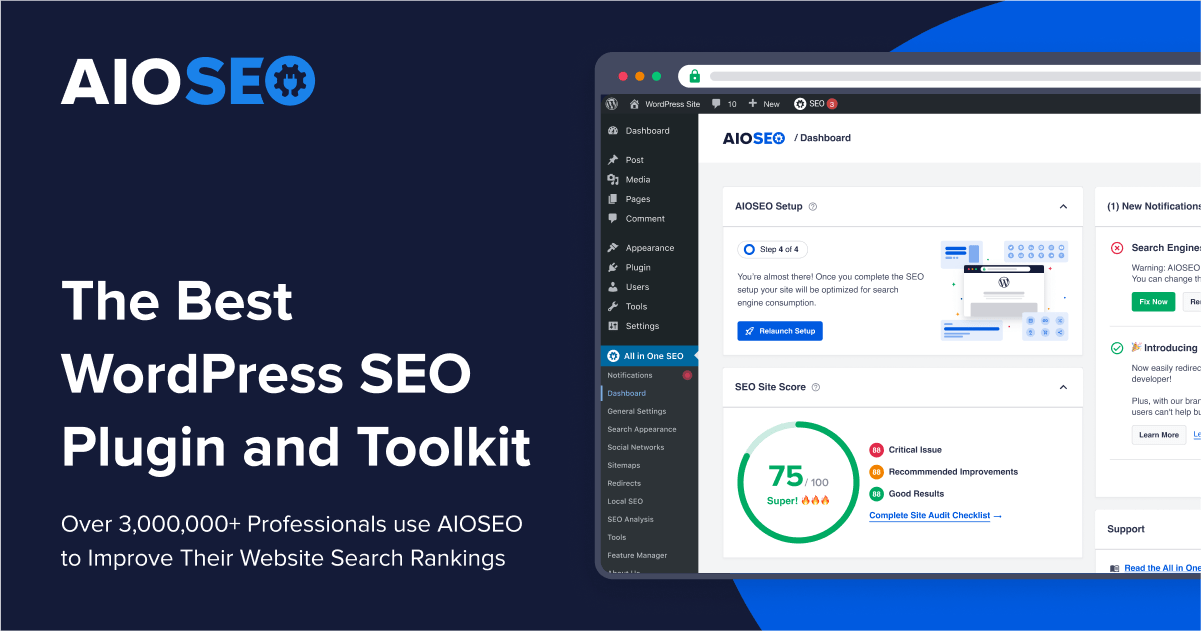 AIOSEO
| 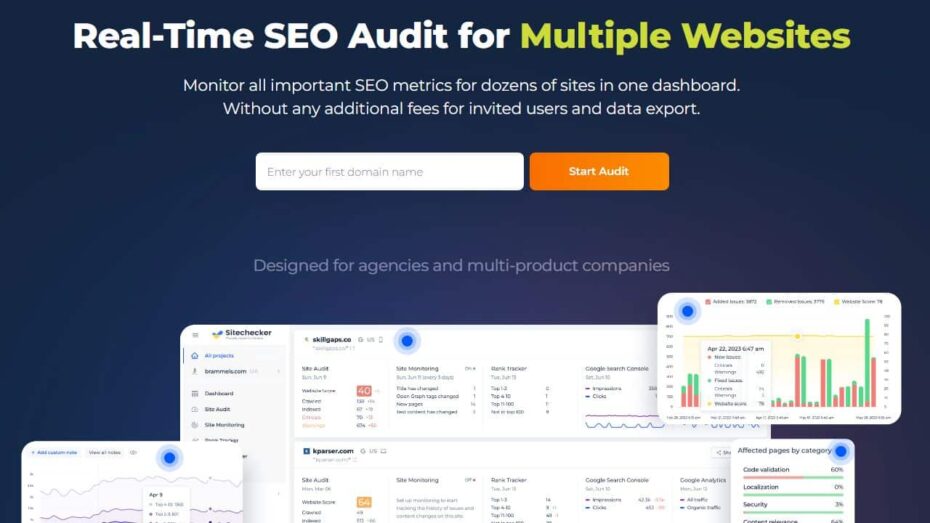 Sitechecker
| 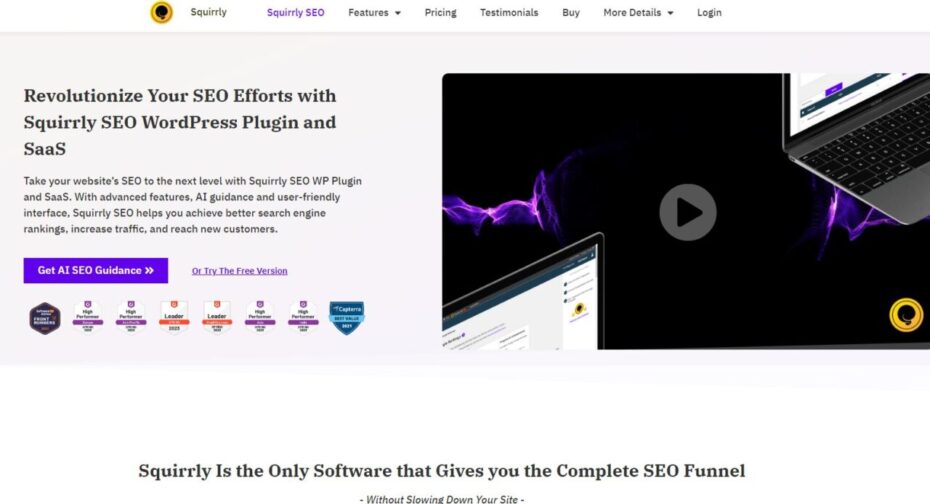 Squirrly
|
Crafting Compelling Anchor Texts: A Numbers Game
Creating compelling anchor texts involves a strategic balance between relevancy and creativity. Statistics show that pages with a well-thought-out internal linking structure tend to perform better in search engine rankings. This is because search engines use anchor texts as a signal to determine the topic of the linked page.
From my perspective, the key to crafting effective anchor texts lies in understanding the intent behind the user’s search. By aligning your anchor texts with the content of the target page and the interests of your audience, you can create links that are both informative and engaging. This not only helps in improving your SEO but also in enhancing the user experience.
In my view, it’s crucial to monitor the performance of your anchor texts regularly. Using analytics, you can identify which anchor texts are driving the most traffic and engagement. This data-driven approach allows you to refine your strategy, focusing on what works best for your audience and your website’s SEO.
According to SEO best practices, it’s beneficial to vary your anchor text to prevent any potential red flags for search engine algorithms.
Diversifying your anchor texts with synonyms, branded terms, and long-tail keywords can help improve your site’s relevance and authority. This strategy ensures that your internal linking structure supports your SEO efforts without appearing manipulative.
Anchor Texts and SEO: Maximizing Impact
Anchor texts are a critical component of SEO that can significantly impact your website’s visibility and ranking. The strategic use of anchor texts in internal links signals to search engines the relevance and context of your content, assisting in the indexing and ranking process.
From my experience, optimizing anchor texts for SEO involves not just including keywords but ensuring these keywords are relevant to the linked page. This relevance is crucial for search engines to accurately assess the content of your site and improve its ranking for specific queries.
It’s a delicate balance between keyword optimization and providing a clear, user-friendly navigation experience.
In my opinion, an often overlooked aspect of anchor text optimization is the opportunity to distribute page authority throughout your site. By linking to high-quality, relevant pages within your own content, you’re effectively telling search engines that these pages are valuable and worth ranking.
This internal link equity distribution is vital for boosting the SEO performance of individual pages.
Finally, I strongly believe in the importance of continuously updating and refining your internal linking strategy. As your site grows and evolves, so too should your use of anchor texts.
Regularly auditing your internal links and their anchor texts ensures that your site remains structured and relevant, both to users and search engines. This ongoing optimization process is key to maintaining and improving your site’s SEO foundation.
2. Master the Art of Link Distribution Across Your Site
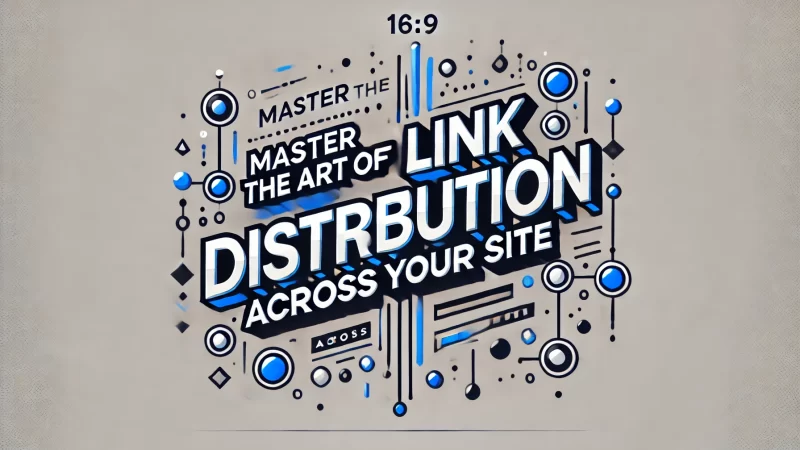
“Strategic link placement within your content can significantly amplify its reach and visibility.” This principle underpins the importance of mastering the art of link distribution across your website.
When executed correctly, a well-thought-out link distribution strategy not only improves site navigation but also enhances your overall SEO performance.
Implementing an effective link distribution strategy involves understanding how link equity, or the value passed from one page to another through hyperlinks, works. In my opinion, one of the most crucial aspects of SEO is ensuring that this equity is spread throughout your site in a way that benefits all your content, not just your homepage or top-level pages.
This approach helps in elevating your entire website’s authority and relevance in search engine rankings.
I suggest prioritizing a user-centric approach to link distribution. This means placing internal links in a manner that feels natural and beneficial to the reader’s journey through your website.
By doing so, you’re not only aiding in their navigation but also increasing the chances of their engagement with more of your content. Remember, a satisfied user is more likely to convert, share, and return to your site.
From my perspective, a common mistake in link distribution is overlooking the potential of deep linking to lesser-known pages. By strategically linking to these inner pages, you can significantly boost their visibility and ranking potential.
I strongly believe that every page on your site should serve a purpose and have the opportunity to be discovered by your audience and search engines alike.
Balancing Link Equity: A Strategic Approach
“Link equity is a search engine’s best friend,” or so the saying goes in the SEO world. Balancing this equity across your site is critical for maximizing SEO outcomes. Each link on your site carries a portion of this equity, influencing not only the linked page’s authority but also its potential to rank higher in search engine results.
In my experience, a strategic approach to balancing link equity involves understanding the hierarchy of your site’s content and the importance of each page. My recommendation is to employ a pyramid structure, where the most critical content receives the most internal links.
This doesn’t mean flooding your top pages with links but rather ensuring that they are strategically placed to distribute value evenly.
Another aspect I would highlight is the importance of regularly auditing your internal link structure. Over time, pages may become more or less relevant, and their link equity needs may change.
By keeping a close eye on your site’s internal linking, you can make adjustments that reflect current priorities and strategies. This ongoing optimization is crucial for maintaining a balanced distribution of link equity.
Most importantly, don’t forget about the user experience. While it’s tempting to focus solely on SEO benefits, the primary goal of your internal links should always be to enhance the usability of your site.
A well-balanced link structure aids in navigation and can significantly improve the overall user experience, contributing to longer site visits and higher engagement rates.
Deep Linking Secrets: Boosting Lesser-Known Pages
Deep linking, or the practice of linking to pages beyond the homepage or top-level categories, is a powerful but often underutilized SEO strategy. It’s a secret weapon for boosting the visibility and authority of lesser-known pages within your site.
By directing users and search engine crawlers to these deep pages, you’re exposing them to content they might not have otherwise discovered.
I think one of the key benefits of deep linking is the opportunity to highlight the breadth and depth of your site’s content. This not only improves the user experience by providing them with more valuable information but also signals to search engines the richness of your site’s content landscape.
As a result, deep pages gain authority and improve their ranking potential.
My recommendation for implementing deep linking effectively is to ensure that links are contextually relevant. The links should feel like a natural extension of the content, guiding users to related information that enhances their understanding or provides additional value.
This approach ensures that the links serve a purpose beyond just SEO, improving content discoverability and user engagement.
Lastly, I would say that tracking and analyzing the performance of your deep links is essential. Use analytics tools to monitor how these links affect page views, bounce rates, and other key metrics. This data can provide insights into user behavior and preferences, allowing you to refine your deep linking strategy over time.
Remember, the goal is to create a seamless and informative experience for your users, encouraging them to explore and engage with your site more deeply.
3. Optimize Your Site Structure with Strategic Internal Linking
Just as the foundation of a building determines its stability, the structure of a website influences its SEO performance and user experience. Strategic internal linking is the steel beams of your website’s architecture, providing support and guidance to both users and search engines.
When implemented effectively, it can significantly enhance the discoverability and authority of your content.
Strategic internal linking serves as a roadmap for search engines to crawl your site. It helps in identifying which pages are most important and how they relate to each other. From my point of view, a well-organized site structure allows search engines to index your pages more efficiently, leading to better visibility in search results.
It’s essential to think of internal linking as a way to weave your content together, creating a cohesive and user-friendly experience.
From a user’s perspective, strategic internal linking facilitates easier navigation and helps them find the information they are looking for without frustration. I believe that a site that is easy to navigate retains visitors longer, decreasing bounce rates and increasing the likelihood of conversion.
Therefore, the goal is to use internal links to guide users naturally through your content, encouraging them to explore deeper into your site.
Most importantly, internal linking distributes page authority and ranking power throughout your site. By linking from high-authority pages to lesser-known pages, you can lift the overall SEO performance of your site.
My recommendation is to use a thoughtful approach to link placement, ensuring that each link serves a purpose and contributes to the overall goal of providing value to the user.
Hierarchical Linking: Organizing for User and SEO Benefits
The concept of hierarchical linking is akin to organizing a library with a clear categorization system, where each book is easy to find and placed in logical relation to others. In the context of a website, this means structuring your content in a way that reflects a clear hierarchy, from general to specific.
This organizational structure is beneficial for both users trying to navigate your site and search engines attempting to index it.
In my opinion, a hierarchical structure starts with a strong homepage that links to main category pages, which in turn link down to individual posts or product pages. This not only makes sense from a user’s perspective but also helps search engines understand the relative importance of pages and how they fit into the overall topic of your site.
It’s essential to ensure that the most important pages are easily accessible through a minimal number of clicks from the homepage.
Speaking personally, I strongly believe that maintaining a clean and clear hierarchy in your linking strategy can significantly improve the indexing and ranking of your pages. Search engines favor websites that exhibit a logical structure, as it makes it easier to crawl and understand the site’s content.
Therefore, it’s crucial to plan your site’s architecture carefully from the outset, considering both SEO and user experience.
Most importantly, hierarchical linking aids in spreading link equity throughout your site. Higher-level pages typically accumulate more link equity due to their positioning and visibility. Strategically linking these pages to more specific, lower-level content can distribute this equity and boost the SEO performance of those pages.
I recommend regularly reviewing your site’s structure and adjusting your internal linking strategy to ensure that link equity flows to where it’s needed most.
Site Navigation and Internal Links: Enhancing Discoverability
Efficient site navigation is the compass that guides visitors through the vast ocean of your content. Internal links are the waypoints on this journey, ensuring that no valuable content remains hidden from view.
By enhancing discoverability through thoughtful internal linking, you make it easier for users to find and engage with your content, improving their overall experience on your site.
From my perspective, the key to effective site navigation lies in understanding user behavior and preferences. By analyzing how visitors interact with your site, you can identify patterns and optimize your internal linking to match their needs.
This might involve placing links to popular content more prominently or creating themed clusters of content that guide users through related topics.
In my estimation, internal links also play a vital role in SEO by helping search engines understand the context and relevance of pages within your site. By using descriptive anchor texts and linking related content, you signal to search engines the topics your site covers and how different pages are connected. This can lead to improved content relevancy for search queries and better rankings.
Finally, I’m of the mind that optimizing site navigation and internal linking is an ongoing process. As your site grows and evolves, so too should your approach to linking and navigation. Regular audits and adjustments based on user feedback and SEO performance data are essential.
My recommendation is to always be on the lookout for opportunities to enhance discoverability and user experience through strategic internal linking.
4. Enhance User Experience with Contextual Internal Links
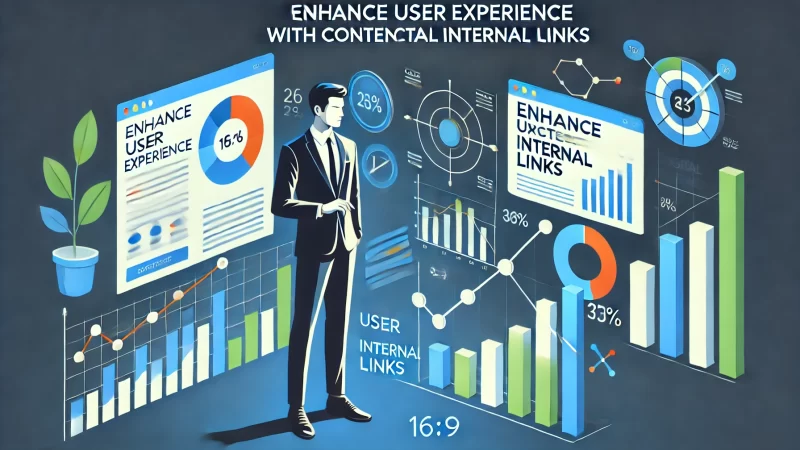
While it’s true that the primary aim of internal linking is to bolster SEO efforts, it’s also crucial to acknowledge their significant impact on enhancing user experience. When internal links are contextually integrated within content, they not only assist search engines in understanding and indexing a site’s pages but also play a vital role in guiding users through a seamless navigation journey.
This dual benefit underscores the importance of strategic internal linking for any website aiming to improve both its search engine visibility and user satisfaction.
Contextual internal links are about providing value and relevance at every turn of the reader’s journey. From my perspective, these links should feel like natural extensions of the conversation, offering users the opportunity to delve deeper into topics they’re interested in.
By carefully aligning links with the content they’re embedded in, websites can significantly enhance the readability and engagement levels of their pages. This approach not only satisfies the user’s quest for information but also encourages a longer stay on the site.
Moreover, a well-thought-out internal linking strategy can effectively distribute page authority and improve the overall structure of your website. I believe that by strategically placing internal links on high-traffic pages, you can guide visitors to lesser-known content, thereby elevating the visibility and value of your entire content repository.
This tactic not only enhances the user experience by providing them with more comprehensive resources but also boosts the SEO performance of those linked pages.
Most importantly, internal links should be implemented with the user’s intent in mind. I recommend using clear and descriptive anchor texts that give users a precise idea of what to expect when they click on a link.
This transparency builds trust and fosters a positive user experience, as visitors feel more in control of their navigation path. Consequently, a site that prioritizes contextual relevance in its internal linking strategy is more likely to retain visitors, reduce bounce rates, and ultimately, convert traffic into loyal followers or customers.
Context is King: Aligning Links with Content
In the realm of digital content, context is indeed king. The strategic alignment of internal links with their surrounding content not only enriches the user’s reading experience but also significantly amplifies the content’s value.
This alignment ensures that every link serves a purpose, providing users with additional, relevant information exactly when they need it. By embedding links that closely match the context of the content, you can create a more cohesive and engaging user journey.
From my experience, the key to successful contextual linking lies in understanding your audience’s needs and preferences. It’s about anticipating what additional information they might find helpful and providing links to that content at the right moments.
This foresight requires a deep understanding of your content and its interconnections within your site. I suggest regularly reviewing your content to identify opportunities where contextual links could add value, ensuring that each link enhances the narrative rather than disrupting it.
Furthermore, contextual internal links can significantly boost your SEO efforts by indicating to search engines the relevance and breadth of your site’s content. From my point of view, when links are thoughtfully placed within relevant content, they signal to search engines the interconnectedness of your pages, thereby improving the authority and ranking of those pages.
This strategic approach not only benefits your site’s SEO but also ensures that users find your content both informative and easy to navigate.
In my estimation, the effectiveness of contextual linking directly correlates with the quality and relevance of the linked content. Therefore, it’s crucial to link to pages that offer substantial value and further exploration of the topic at hand.
I recommend creating a content strategy that emphasizes depth and comprehensiveness, making your site a go-to resource for information in your niche. By doing so, you ensure that your internal links always lead users to content that satisfies their informational needs and encourages deeper engagement with your site.
Reducing Bounce Rates with Engaging Links
One of the most compelling benefits of contextual internal linking is its ability to significantly reduce bounce rates. By providing users with relevant and engaging links that lead to further related content, you can encourage them to continue their exploration within your site, thereby decreasing the likelihood of them leaving after viewing just one page.
This not only improves the user experience but also signals to search engines that your site is valuable and engaging, potentially boosting your SEO rankings.
I believe that the art of reducing bounce rates through engaging links begins with an understanding of user behavior. By analyzing how visitors interact with your site, you can identify patterns and tailor your internal linking strategy to meet their needs.
This might involve placing links to related articles at the end of each post or integrating them naturally within the content where users are most likely to find them relevant. My suggestion is to always prioritize the user’s experience, ensuring that each link adds value to their journey.
From my perspective, the use of engaging, descriptive anchor texts is crucial in this process. Clear and compelling anchor texts can pique the user’s interest and make the linked content irresistible.
I recommend crafting anchor texts that accurately describe the linked page’s content while also enticing the reader to click through. This careful balance between clarity and curiosity can significantly enhance the effectiveness of your internal links in reducing bounce rates.
Finally, I strongly believe in the importance of continuously monitoring and optimizing your internal linking strategy. By keeping track of how changes to your internal links affect user engagement and bounce rates, you can make informed decisions that further improve the user experience.
My recommendation is to use analytics tools to measure the performance of your links, allowing you to refine your strategy over time. Remember, a site that is easy to navigate and full of engaging, relevant content is more likely to retain visitors and convert them into loyal readers or customers.
5. Utilize Internal Links to Promote Your Cornerstone Content
Surprisingly, many website owners overlook the power of internal linking as a strategic tool to highlight their cornerstone content. Cornerstone content, the most important and comprehensive pieces on your site, forms the foundation of your website’s subject authority.
By effectively utilizing internal links, you can significantly increase the visibility and impact of these key pieces, enhancing both user engagement and search engine ranking.
Firstly, internal linking to your cornerstone content helps in evenly distributing site authority. Each link acts as a vote of confidence, signaling to search engines the importance of these pages.
From my perspective, strategically placing internal links in newer or less-visited pages directs visitors towards your high-value content, thereby increasing its reach and reinforcing its significance to your overall site theme.
This not only boosts the SEO value of your cornerstone content but also enriches the user’s journey through your site.
Moreover, internal linking provides an opportunity to keep your audience engaged with your content longer. By linking related articles or posts to your cornerstone pieces, you create a network of information that encourages users to explore deeper.
I believe this interconnected web of content not only improves site navigation but also positions your website as a comprehensive resource on specific topics, thereby enhancing user satisfaction and loyalty.
Most importantly, effective internal linking requires a careful and deliberate approach. I recommend conducting a thorough audit of your existing content to identify opportunities where links to your cornerstone pieces can be naturally integrated.
This process involves evaluating the relevance of each piece and ensuring that links are placed in a context that provides value to the reader. Remember, the goal is to enhance the user experience by making your cornerstone content easily accessible and prominently featured throughout your site.
Elevating Your Best Work: A Data-Driven Strategy
Elevating your best work through a data-driven strategy involves leveraging analytics to understand how internal links can best promote your cornerstone content. It’s fascinating to see how data can reveal which internal links are most effective in driving traffic and engagement to your key pieces.
By analyzing click-through rates and user engagement metrics, you can refine your linking strategy to better highlight and support your cornerstone content.
In my opinion, a data-driven approach allows you to make informed decisions about where to place internal links for maximum impact. It involves identifying pages with high traffic but low conversion or engagement rates and strategically inserting links to cornerstone content to improve performance.
This method ensures that your efforts are focused on optimizing areas of your site that can benefit most from increased exposure to your foundational pieces.
Additionally, a data-driven strategy emphasizes the importance of using relevant and descriptive anchor text for internal links. From my perspective, anchor text provides context to both users and search engines about the content being linked to.
By analyzing which terms and phrases drive the most traffic to your cornerstone content, you can optimize your anchor texts to enhance both visibility and relevance.
Most importantly, regularly updating your internal linking strategy based on data analytics is crucial for maintaining the effectiveness of your efforts. Trends change, and what works today might not work tomorrow. I recommend setting up a schedule to review your site’s internal linking structure and performance metrics periodically.
This proactive approach ensures that your cornerstone content remains a central and accessible part of your website’s narrative, continually driving value and engagement.
Cornerstone Content and Internal Links: Creating Pathways
Creating pathways to your cornerstone content through internal links is about more than just boosting SEO; it’s about crafting a user experience that seamlessly guides visitors through your site’s wealth of information.
By strategically placing internal links, you essentially lay down a breadcrumb trail that leads users to your most valuable and informative content, ensuring they benefit from the full breadth of knowledge you have to offer.
From my perspective, the process begins with mapping out the relationship between your cornerstone content and other related articles or pages on your site. This map serves as a blueprint for integrating internal links in a way that feels organic and intuitive to the user.
It’s about connecting dots in a manner that enriches the user’s journey and encourages exploration without overwhelming them with options.
Moreover, creating these pathways helps in establishing content hierarchies within your site, making it easier for search engines to understand the importance and relevance of your cornerstone pieces. I believe that this clarity not only aids in better indexing but also enhances the authority of your site on specific topics, leading to improved rankings and visibility.
In my estimation, the success of creating pathways to your cornerstone content lies in the balance between accessibility and over-saturation. It’s vital to integrate links in a way that adds value without detracting from the user experience.
I recommend carefully selecting points within your content where a link to cornerstone content naturally fits the flow and adds depth to the topic at hand. This thoughtful approach ensures that your internal linking strategy supports both your SEO goals and your commitment to providing users with a rewarding and informative site experience.
6. Audit and Revitalize Old Posts with New Internal Links
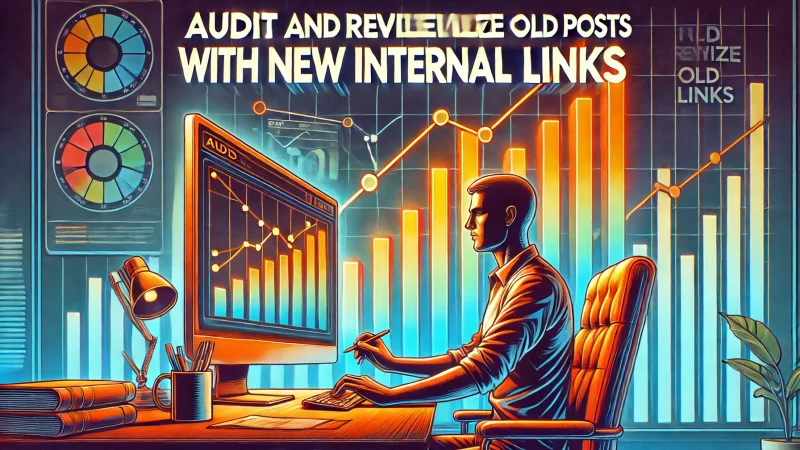
“An old post revitalized with new internal links is like a classic book getting a fresh, new cover; it’s the same valuable content, just more accessible and engaging.” This approach to updating your website’s content can significantly enhance your SEO efforts and breathe new life into articles that may have lost their initial visibility.
Incorporating new internal links into old posts not only improves site navigation but also helps redistribute your site’s authority more evenly, ensuring that valuable insights don’t go unnoticed.
Revitalizing old posts starts with a comprehensive audit to identify content that remains relevant but may not perform as well in search rankings as it could. This process involves evaluating which articles still offer value to your readers and could benefit from updated internal links.
I suggest prioritizing posts that have historically driven traffic or conversions but have seen a decline over time. By adding new internal links, you’re not just enhancing SEO; you’re also providing your audience with a more cohesive and resourceful browsing experience.
Moreover, updating old posts with new internal links is an excellent opportunity to strengthen your site’s overall content strategy. From my perspective, this practice encourages a deeper exploration of your website, leading users from one article to another in a logical and engaging manner.
It’s essential to ensure that these new links are relevant and provide direct value to the reader, enhancing their journey and encouraging them to stay longer on your site.
Most importantly, this revitalization effort should be seen as an ongoing process rather than a one-time task. I recommend regularly scheduling content audits to assess the need for updates, including the addition of new internal links.
This proactive approach ensures that your site remains dynamic, with content that continues to engage and inform your audience, regardless of its original publication date.
The Power of Revival: Injecting Life into Old Posts
Breathing new life into old posts through the strategic addition of internal links is akin to rediscovering hidden treasures within your content archive. This process not only reinvigorates your existing content but also maximizes its potential to attract and retain audience engagement.
By carefully selecting which older posts to update and how to link them to newer content, you can create a seamless flow of information that enriches the user experience and bolsters your site’s SEO performance.
I believe that the key to a successful revival lies in identifying posts with timeless relevance or those that can be updated to reflect current trends and information. This ensures that the content remains valuable to your audience and continues to contribute positively to your site’s authority.
I recommend focusing on posts that align with your current content strategy and have the potential to further enhance your site’s thematic consistency and depth.
Additionally, injecting new life into old posts through updated internal links encourages a reevaluation of your content’s overall structure and coherence. It’s an opportunity to reassess how different pieces of content relate to each other and to optimize those relationships for both user engagement and search engine visibility.
From my perspective, this strategic interlinking is essential for creating a content ecosystem that supports sustained traffic growth and improved search rankings.
Most importantly, the revival of old posts should involve more than just adding new links. I strongly believe in the importance of updating the content itself, if necessary, to ensure accuracy, relevance, and engagement.
This might include revising outdated information, enhancing readability, and incorporating multimedia elements. Such comprehensive updates, combined with strategic internal linking, can dramatically increase the value of your older content, making it a vital part of your site’s ongoing success.
Leveraging Historical Data to Strengthen Links
Utilizing historical data to inform the strategic placement of new internal links within old posts can significantly enhance the effectiveness of your content revival efforts. By analyzing user engagement metrics, you can identify patterns and trends that reveal which topics or types of content resonate most with your audience.
This data-driven approach allows you to make informed decisions about where to add new links, ensuring they contribute meaningfully to the user experience and support your SEO objectives.
In my experience, leveraging analytics tools to track the performance of old posts before and after adding new internal links provides valuable insights into the impact of your updates. It enables you to measure improvements in traffic, engagement, and conversions, helping to justify the effort involved in the revitalization process.
I recommend closely monitoring key performance indicators to assess the success of your internal linking strategy and to identify opportunities for further optimization.
Furthermore, historical data can also help you identify which older posts have the potential to become cornerstone content with the addition of new internal links. From my point of view, these are the posts that, despite their age, continue to attract significant interest and engagement from your audience.
By enhancing these posts with links to and from newer content, you can create powerful content hubs that serve as focal points for your site’s thematic areas.
Most importantly, leveraging historical data should not be a static process. I believe in the importance of continually revisiting and reassessing your content’s performance over time. This iterative approach ensures that your internal linking strategy remains aligned with evolving user interests and search engine algorithms.
By staying attuned to the changing landscape of your content’s performance, you can maintain a dynamic and engaging website that consistently meets the needs of your audience and supports your long-term SEO goals.
7. Monitor and Evaluate the Performance of Your Internal Links
Did you know that websites with effectively monitored and optimized internal links can see a significant improvement in user engagement and SEO performance? This fact highlights the importance of not just implementing an internal linking strategy but also actively monitoring and evaluating its impact.
Understanding how your internal links perform can help you refine your approach, ensuring that your site remains navigable and your content easily discoverable by both users and search engines.
To start, tracking the click-through rates (CTR) of your internal links is essential. This metric can tell you a lot about user behavior on your site.
High CTR on certain links suggests that users find the content relevant and engaging, while low CTR could indicate that the linked content may not be as compelling or that the anchor text is not effectively communicating the value of the linked page.
I recommend using tools like Google Analytics to monitor these metrics, as they can provide valuable insights into how your internal linking strategy is performing.
Moreover, analyzing the bounce rate and time on page for content with internal links can offer insights into user engagement. If you notice that pages with specific internal links have lower bounce rates and higher time spent on the page, it suggests that the links are successfully encouraging further exploration of your site.
This indicates a well-structured internal linking strategy that enhances the user experience by providing them with relevant and valuable content. I think adjusting your internal links based on these insights can significantly improve the performance of your content and the usability of your site.
Most importantly, assessing the SEO impact of your internal links involves monitoring your pages’ rankings in search engine results pages (SERPs). Effective internal linking can help distribute page authority throughout your site, boosting the visibility of previously underperforming pages.
From my perspective, regularly reviewing your internal links and their correlation with page rankings can help you identify which links contribute most positively to your SEO goals and adjust your strategy accordingly.
Analytics for Internal Links: Tracking Success Metrics
Leveraging analytics for internal links involves focusing on success metrics that directly reflect the effectiveness of your linking strategy. Metrics such as page views, link click-through rate, and path analysis can provide a comprehensive view of how users navigate through your site.
These insights are crucial for understanding which internal links are driving engagement and which ones might be overlooked by your audience. I strongly believe that regularly reviewing these metrics can highlight opportunities for optimizing your internal link placement and anchor text to better capture user interest.
Furthermore, conversion rate tracking for pages with strategic internal links can illuminate the direct impact of your linking strategy on your site’s business goals. By analyzing how internal links influence the user journey towards conversion, you can identify which links are most effective at guiding users through your sales funnel.
I recommend setting up goal tracking in your analytics platform to measure the performance of these links in relation to specific conversion paths. This data-driven approach allows for targeted improvements to your internal linking strategy.
In my estimation, heatmaps and user flow analysis tools also play a vital role in analytics for internal links. These tools can visually represent where users are clicking on your pages and how they navigate from one piece of content to another.
From my view, such visual data can uncover user behavior patterns that might not be evident through traditional analytics metrics alone. By understanding these patterns, you can refine your internal linking strategy to align more closely with user preferences and behaviors.
Most importantly, leveraging analytics requires a commitment to continuous learning and adaptation. The digital landscape and user behaviors are always evolving, and so should your internal linking strategy.
I’m of the mind that by staying informed about the latest analytics tools and techniques, you can maintain a dynamic approach to monitoring and evaluating your internal links, ensuring they consistently contribute to your site’s engagement, usability, and SEO performance.
Continuous Improvement: Adapting Strategies Based on Data
The principle of continuous improvement in managing internal links emphasizes the importance of being adaptable and responsive to the insights gained from data analysis. By treating your internal linking strategy as a dynamic component of your website’s ecosystem, you can ensure that it evolves in line with changing content landscapes and user expectations.
I believe that embracing a mindset of ongoing optimization is key to maintaining a high-performing website that serves both your audience’s needs and your SEO objectives effectively.
Adapting strategies based on data involves not just making changes but also testing those changes to evaluate their impact. A/B testing, for instance, can be an invaluable tool for comparing different internal linking approaches to see which yields better engagement or conversion rates.
I suggest implementing controlled tests where you vary the anchor text, link placement, or the number of links on a page to determine what works best for your site and your audience.
Furthermore, it’s crucial to keep abreast of the latest SEO trends and algorithm updates, as these can affect the efficacy of your internal linking strategy. For example, search engines might update their algorithms to place more or less emphasis on certain types of links or navigational structures.
In my opinion, staying informed about these changes and adjusting your strategy accordingly is essential for ensuring that your site continues to perform well in search rankings.
Strengthening Your SEO Foundation with Effective Internal Links
Implementing an effective internal linking strategy is pivotal for strengthening your site’s SEO foundation. It’s not just about connecting one page to another; it’s about creating a web of content that enhances user experience and guides search engines through your site’s architecture.
This approach helps in evenly distributing link equity across your pages, boosting the visibility of even the less visited ones. Most importantly, a robust internal linking structure can significantly reduce bounce rates by providing users with additional reading options that are relevant and engaging.
Furthermore, internal links play a crucial role in improving your site’s navigability. By strategically placing internal links, you ensure that users can easily find and access the content they are interested in, which in turn, increases the time they spend on your site.
From my perspective, the longer users stay on your site, the better it is for your SEO performance. Therefore, focusing on internal linking not only improves user satisfaction but also sends positive signals to search engines, contributing to higher rankings.
Analytics for Internal Links: Tracking Success Metrics
To truly harness the power of internal linking, it’s essential to track specific success metrics. By monitoring the click-through rates on your internal links, you can gain insights into which links are most effective and which pages capture your audience’s interest.
This data is invaluable for refining your internal linking strategy and ensuring that your links are genuinely contributing to a better user experience. I suggest leveraging analytics tools to regularly review these metrics and make data-driven decisions to optimize your site’s performance.
Additionally, analyzing the bounce rate and pageviews can provide a deeper understanding of how internal links influence user behavior. Pages with a high number of internal links leading to them should ideally show lower bounce rates and higher engagement levels.
If this isn’t the case, it might be time to reevaluate the relevancy and placement of your links. From my experience, adjusting your internal linking strategy based on these insights can significantly enhance your site’s SEO and user engagement.
Most importantly, understanding the flow of traffic between your pages through path analysis can shed light on the user journey across your site. This insight allows you to strategically place internal links in a way that guides users through a logical content progression, enhancing their overall site experience.
I strongly believe that by optimizing this flow, you can effectively lead users to conversion points, thereby increasing your site’s conversion rate.
Furthermore, setting up goals in your analytics software to track conversions from pages with strategic internal links can illuminate the direct impact of your linking strategy on your business objectives. By identifying which internal links contribute most significantly to achieving your goals, you can replicate successful strategies across your site.
I recommend continuously experimenting with and adjusting your internal links, as what works today may not work tomorrow due to changing user preferences and search engine algorithms. Continuous improvement based on data is key to maintaining an effective internal linking strategy that supports both SEO and user experience goals.
Frequently Asked Questions (FAQ)
What are internal links?
Internal links are hyperlinks that connect one page of a website to another page on the same domain. These links are essential for website navigation and help users find relevant content. They also play a crucial role in SEO by distributing link equity across your site, which can improve your site’s search engine rankings.
Why are internal links important for SEO?
Internal links are important for SEO because they help search engines understand the structure of your website. They enable search engine crawlers to index your pages more efficiently and pass on the link equity, which can improve your page rankings. Moreover, internal links can enhance user experience by guiding visitors to related content.
How do I create effective internal links?
To create effective internal links, follow these steps:
Use descriptive and relevant anchor text.
Link to high-quality and relevant content.
Ensure the linked content is useful and adds value to the user.
Maintain a natural flow in your content while adding links.
Avoid excessive linking; keep it balanced.What is anchor text and why is it important?
Anchor text is the clickable text in a hyperlink. It is important because it provides context to both users and search engines about the linked page’s content. Using relevant and descriptive anchor text can improve your site’s SEO by signaling the topic of the linked page, which helps in better indexing and ranking.
How many internal links should a page have?
There is no strict rule on the number of internal links a page should have, but it is recommended to use a reasonable number that enhances user experience without overwhelming them. Typically, 2-5 internal links per 500 words of content can be a good practice, but the key is relevance and usefulness.
Can internal links help with website navigation?
Yes, internal links are essential for website navigation. They help users find related content easily, which can improve the overall user experience. A well-structured internal linking strategy can guide visitors through your site in a logical manner, making it easier for them to find the information they need.
What is the difference between internal and external links?
Internal links connect pages within the same website, while external links connect your site to pages on other domains. Both types of links are important for SEO, but internal links help with site navigation and distributing link equity within your site, whereas external links can provide credibility and reference to external resources.
How do internal links affect page authority?
Internal links help distribute page authority (or link equity) across your website. By linking to high-priority pages, you can pass on some of the authority from well-performing pages to other important pages, potentially improving their rankings in search engine results.
Should I use internal links in my blog posts?
Yes, using internal links in blog posts is highly beneficial. They can help guide readers to related articles, increase the time spent on your site, and improve your SEO by helping search engines crawl and index your pages more effectively. Ensure that the links are relevant and provide additional value to your readers.
How often should I update internal links on my website?
It is advisable to review and update your internal links regularly. This could be part of your routine content audit, ensuring that all links are functional and relevant. Regular updates can help maintain a good SEO structure and ensure that users are always directed to the most up-to-date and relevant content on your site.


